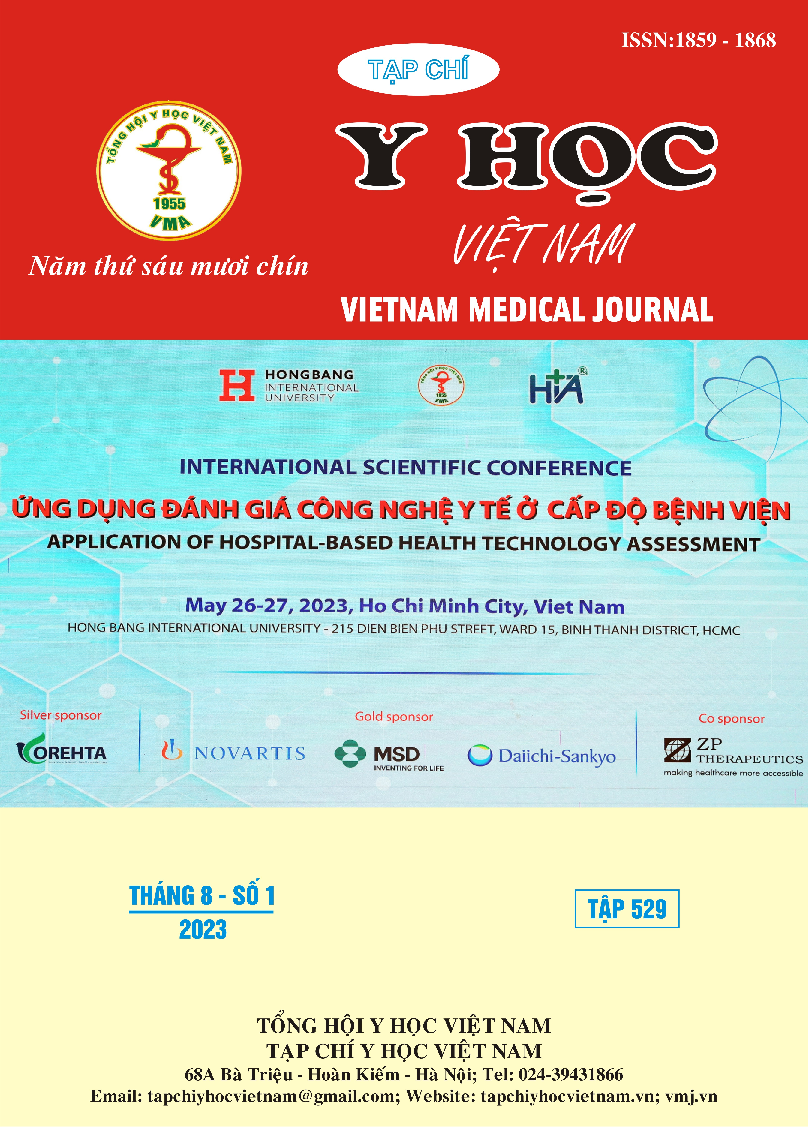THE ROLE OF DYNAMIC PELVIC FLOOR MAGNETIC RESONANCE IMAGING IN THE DIAGNOSIS OF STRESS URINARY INCONTINENCE IN FEMALE PATIENTS
Main Article Content
Abstract
Purpose: To evaluate the role of dynamic pelvic floor magnetic resonance imaging (MRI) in diagnosing the cause of stress urinary incontinence (SUI) in female patients. Material and method: This prospective study was carried out on 43 female patients, including 22 patients with SUI (disease group) and 21 patients without SUI (control group), all underwent the dynamic pelvic floor MRI. Urethral angle (UA), posterior urethro-vesical angle (PUVA), bladder neck – pubo-coccygeal angle (BNPCA), and position of bladder neck (BN) and cervix relative to the pubococcygeal line (PCL) were measured on dynamic (Cine) pulse sequences at rest and evacuation phases. These parameters were compared between two groups to evaluate which anatomical factors affecting on SUI. Results: The mean age of the patients was 57.3±13.8 y.o (disease group: 53.9±12.6, control group: 60.8±14.4), the mean number of childbirths was 2.2±0.65, the vaginal delivery accounted for 73% in each group. There was no statistically significant difference (p>0.05) between the two groups in terms of the urethral angle, bladder neck-pubo-coccygeal angle, position of bladder neck relative to pubococcygeal line in both resting and evacuation phases. In contrast, there was a statistically significant difference between the 2 groups in the posterior urethro-vesical angle (p<0.001) at both rest and evacuation phases and the cervix position at evacuation phase (p=0.001). AUC of the posterior urethro-vesical angle for the SUI diagnosis was 0.9 at rest and 0.98 at evacuation phases. For the threshold 133.50 at rest phase and 153.50 at evacuation phase, the sensibility and specificity of PUVA were 0.86 and 0.86 at rest phase, and 0.91 and 0.95 at evacuation phase, respectively. Conclusion: Our study showed that the posterior urethro-vesical angle at both rest and evacuation phases provided the high sensibility and specificity for the SUI diagnosis.
Article Details
Keywords
Dynamic pelvic floor MRI, Stress urinary incontinence, Posterior urethra-vesical angle.
References
2. Nygaard IE, Heit M. Stress Urinary Incontinence: Obstet Gynecol. 2004;104(3):607-620.
3. DeLancey, J.O. Structural support of the urethra as it relates to stress urinary incontinence: The hammock hypothesis. Am. J. Obstet. Gynecol. 1994, 170, 1713–1720.
4. Kobra Falah-Hassani, Joanna Reeves et al. The pathophysiology of stress urinary incontinence: a systematic review and meta-analysis. International Urogynecology Journal (2021) 32:501–552.
5. Kim JK, Kim YJ, Choo MS, Cho KS. The urethra and its supporting structures in women with stress urinary incontinence: MR imaging using an endovaginal coil. AJR Am J Roentgenol. 2003;180(4):1037–44. https://doi.org/10.2214/ajr.180.4. 1801037.
6. Tasali N, Cubuk R, sinanoğlu O, Şahin K, Saydam B. MRI in Stress Urinary Incontinence Endovaginal MRI With an Intracavitary Coil and Dynamic Pelvic MRI. Urol J. 2012; 9:397-404.
7. Li M, Wang B, Liu X, Qiao P, Jiao W, Jiang T. MR defecography in the assessment of anatomic and functional abnormalities in stress urinary incontinence before and after pelvic reconstruction. Eur J Radiol. 2020; 126:108935. https://doi.org/10.1016/j.ejrad. 2020.108935.
8. Li N, Cui C, Cheng Y, Wu Y, Yin J, Shen W. Association between Magnetic Resonance Imaging Findings of the Pelvic Floor and de novo Stress Urinary Incontinence after Vaginal Delivery. Korean J Radiol. 2018;19(4):715.
9. Ansquer Y, Fernandez P et al. MRI urethrovesical junction mobility is associated with global pelvic floor laxity in female stress incontinence. Acta Obstet Gynecol Scand. 2007;86(10):1243-1250.
10. Lukanovic A, Patrelli TS. Validation of ultrasound scan in the diagnosis of female stress urinary incontinence. Clin Exp Obstet Gynecol. 2011;38(4):373–8.


